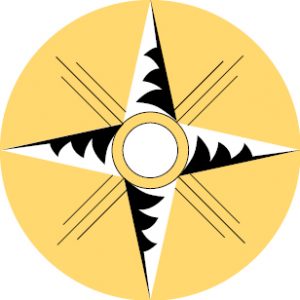 How do I know I’m not just imagining all this, or making it up?
How do I know I’m not just imagining all this, or making it up?
This is a common question among beginning journeyers. Ultimately it is a question that we each must answer for ourselves. We live in a culture that exalts rational mind, intellect, and consensual reality. But we journey in non-ordinary reality where personal truth is experienced through the language of metaphor, feeling states, dreamlike imagery, and visions. What we “see” cannot be verified by others in the usual sense, so it’s easy to assume we’re just making things up. Shamanism is an independent spirituality, however, where each of us must come to know through personal experience the reality of the shamanic realms.
A little coaching about methodology can be helpful too. Successful journeying is a little like learning to drive a car. It’s not a passive process. You can’t just sit in the car and wait for something to happen. You have to start the car, put your foot on the gas pedal, and steer. Journeying is like that. At first it is likely that you are using a bit of imagination to get things started. For example, you have to imagine or visualize your point of departure. And then you have to be active in getting yourself to go up or down through the transition zones/barriers to reach the Upper and Lower Worlds. Journeying is not just drifting and hoping something will happen and imagination can be a valuable tool to get your journey going.
With consistent practice, most people realize that things are happening that they are not directing. Those who do shamanic healing report that information, often in the form of imagery, comes in journeys that is highly specific and relevant for the client yet astonishing to the practitioner. After a time of experiencing these kinds of surprising results and the healing that happens for the client because of it, you stop worrying about making things up. You start asking different questions like: Was the journey helpful? Did I get useful information? Did healing take place?
With experience, the question of “making things up” becomes irrelevant. What matters is the healing and transformation that takes place. And you become as the shamans of old: “one who knows,” not as a matter of faith but from your own direct experience.
For more about imagination and the reality of shamanic journeys, see: Cave and Cosmos, Shamanic Encounters with Another Reality by Michael Harner, chapter 8, beginning on page 109.
__________________________________________________________________________________
Polestar logo design by Carolyn Fee ©2010 Foundation for Shamanic Studies
FSS Polestar highlights some of the questions we are frequently asked about contemporary shamanic practice. “Polestar” is defined as “something that serves as a guiding principle.” It reflects our commitment to helping practitioners stay oriented to authentic shamanic methods and ethics, while maintaining their own independent spirituality, which comes from learning directly from the compassionate spirits. Send us your practice-related questions for consideration for Polestar. Use our CONTACT FORM, and put “Polestar” in the subject line.
